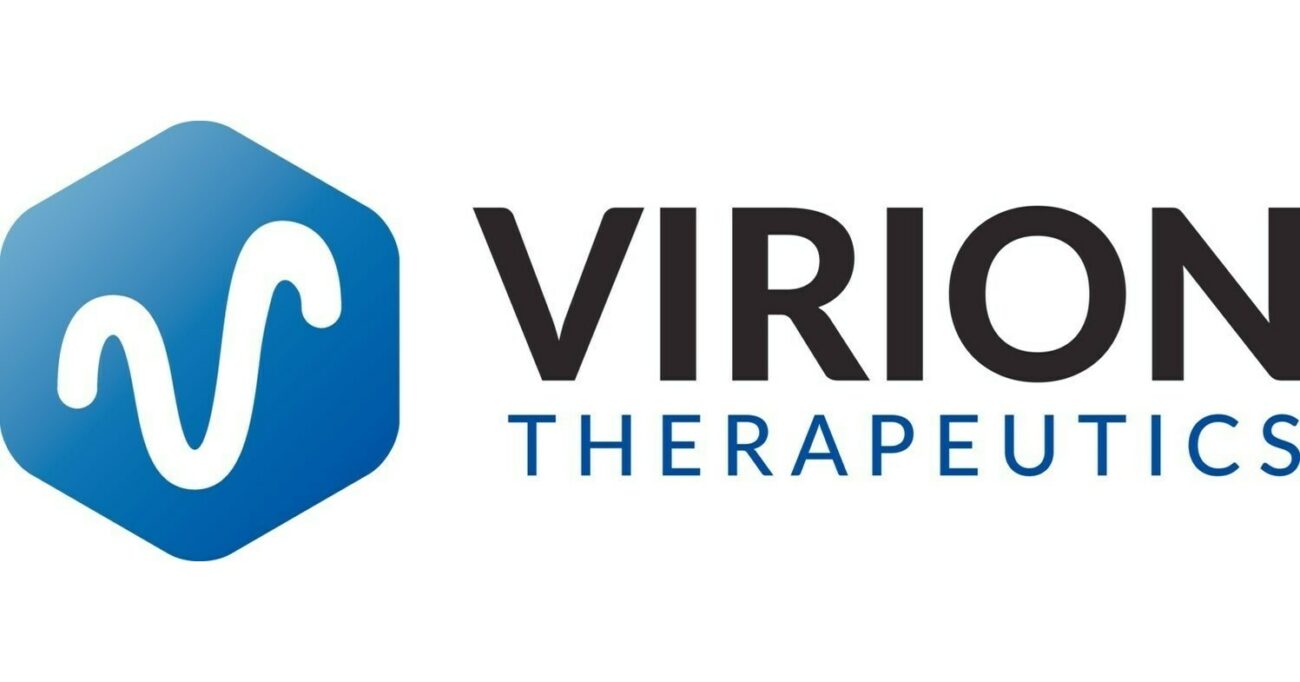Silicone Gel Implants – Complete Guide
Silicone gel breast augmentation is a surgical procedure designed to enhance the size and shape of the breasts. It involves placing implants filled with a cohesive silicone gel that closely mimics the feel and consistency of natural breast tissue. One of the primary advantages of these implants is their natural look and feel, making them a popular choice for women seeking to restore breast volume after pregnancy, weight loss, or simply to enhance their appearance. Silicone gel implants consist of a silicone outer shell filled with a cohesive silicone polymer gel. Unlike their saline counterparts, these implants come pre-filled in a variety of sizes, shapes, and profiles. When you’re evaluating breast augmentation options, understanding the unique properties of silicone implants becomes essential for making an informed decision.
The silicone gel within these implants has evolved significantly over generations of development. Modern silicone implants utilize a cohesive gel that maintains its shape and position even if the outer shell is compromised. This cohesiveness ranges from moderately cohesive gels that closely mimic the feel of natural breast tissue to highly cohesive “form-stable” varieties that maintain a specific shape.
When I examine patients considering silicone implants, I emphasize their primary advantage: natural feel and movement. The gel’s density and viscosity closely approximate natural breast tissue, creating results that appear and feel more natural than saline alternatives. This becomes particularly important for patients with minimal existing breast tissue, where the implant characteristics significantly influence the final result.
You should understand several important considerations specific to silicone implants. Unlike saline implants, silicone implant rupture doesn’t cause immediate deflation or obvious asymmetry. The cohesive gel typically remains within the implant shell or surrounding capsule, creating what we call a “silent rupture” that may go undetected without imaging studies. For this reason, the FDA recommends periodic MRI or ultrasound screening.
Implant Placement Options
Subglandular (over the muscle)
With silicone gel implants, subglandular placement positions the implant directly behind your breast tissue but in front of the pectoral muscle. This technique creates a distinct advantage with silicone implants due to their natural feel characteristics. The cohesive gel’s movement mimics natural breast tissue, often making the subglandular position more viable than with saline alternatives.
When performing subglandular placement with silicone implants, I create a precise pocket that holds the implant securely while allowing natural movement. The silicone implant’s reduced edge visibility and decreased rippling make this placement more feasible for patients with borderline tissue coverage (1.5-2 cm thickness) who might not be candidates for subglandular saline implants.
You’ll experience minimal post-operative discomfort with this approach, as I don’t need to manipulate the chest muscle. Most patients return to normal activities within 3-5 days, with no restrictions on chest muscle use during recovery. This represents a significant advantage for athletic patients or those whose professions involve upper body activities.
For patients with tuberous breasts or mild ptosis (sagging), subglandular silicone implants can provide excellent correction without the need for additional lifting procedures. The implant’s ability to reshape the lower pole while maintaining natural upper pole contours makes this approach particularly effective for these anatomical variations.
However, subglandular placement isn’t appropriate for every patient. If you have very thin breast tissue (less than 1.5 cm), even silicone implants may show visible edges or rippling in this position. Additionally, mammography becomes more challenging with subglandular placement, requiring specialized displacement techniques to visualize all breast tissue effectively during cancer screening.
Submuscular (under the muscle)
Submuscular placement with silicone implants offers significant advantages for patients with minimal existing breast tissue. When I perform this technique, I position the implant beneath your pectoralis major muscle, creating natural tissue coverage over the upper and inner aspects of the implant where visibility concerns are greatest.
The combination of silicone implants with submuscular placement provides the most natural-appearing upper pole contour in thin patients. The muscle tissue effectively disguises the implant edge, preventing the unnaturally sharp transition sometimes visible with subglandular techniques. This becomes particularly important for slender patients with minimal existing breast volume.
Clinical data demonstrates lower rates of capsular contracture with submuscular silicone implants compared to subglandular placement. The continuous massage-like effect of muscle movement may help prevent abnormal capsule formation, representing a significant long-term advantage given silicone implants’ higher average longevity.
The submuscular approach facilitates more accurate mammographic imaging, which becomes particularly important with silicone implants where rupture detection requires comprehensive visualization. The implant separation from breast tissue allows better cancer screening visualization and easier differentiation between breast abnormalities and implant characteristics.
You should expect more post-operative discomfort with this technique compared to subglandular placement, typically requiring 7-10 days before returning to normal activities and 4-6 weeks before resuming chest exercises. Some patients experience animation deformity—temporary breast distortion during pectoral muscle contraction—though this typically resolves or becomes minimal as tissues adapt to the implant.
For athletic patients with minimal breast tissue, submuscular silicone implants provide optimal aesthetic outcomes while allowing continued athletic performance. Though some adjustment period occurs while adapting to the sensation of implants beneath the muscle during exercise, most patients report complete accommodation within 3-6 months.
Dual-plane technique
The dual-plane technique represents my preferred approach for most silicone implant patients, combining the advantages of both placement methods. With this approach, I position the implant partially beneath the pectoral muscle in the upper portion, while the lower portion sits directly behind the breast tissue.
This specialized technique addresses many limitations of traditional placement methods. The partial muscle coverage in the upper pole provides the natural appearance benefits of submuscular placement where visibility concerns are greatest. Meanwhile, the lower direct tissue coverage allows more natural-appearing lower pole fullness and breast shape.
When performing dual-plane positioning with silicone implants, I precisely release the lower pectoral muscle attachments to create appropriate implant-tissue relationships. This controlled release prevents the “double-bubble” deformity sometimes seen with full submuscular placement in patients with lower breast tissue laxity.
The dual-plane approach particularly benefits patients with mild to moderate breast ptosis (sagging). The technique allows controlled positioning of the implant relative to the nipple-areolar complex, creating the appearance of a modest lift without necessarily requiring additional skin excision procedures.
You’ll experience moderate post-operative discomfort, typically less than full submuscular but more than subglandular placement. Recovery averages 5-7 days before returning to normal activities, with chest exercise restrictions for approximately 3-4 weeks. The technique significantly reduces animation deformity compared to full submuscular placement.
Clinical studies demonstrate excellent long-term aesthetic outcomes with the dual-plane technique and silicone implants, with high patient satisfaction rates and lower complication rates than either traditional approach alone. For patients with moderate existing breast tissue seeking natural-looking results, this approach effectively balances the advantages of both placement methods.
Incision Approaches
Inframammary fold (under the breast)
The inframammary approach represents the most commonly utilized incision for silicone implant placement. This 4.5-6 centimeter incision follows the natural crease beneath your breast, positioning the scar in a naturally concealed location that becomes virtually invisible when your arms are at your sides.
This approach provides me with direct visualization of the surgical field, allowing precise pocket creation and implant placement. For silicone implants, this direct access becomes particularly important given their pre-filled nature and the precision required for proper positioning.
When performing silicone implant placement through inframammary incisions, I meticulously create a properly-sized pocket to prevent implant displacement while allowing natural movement. The approach facilitates precise control of the inframammary fold position, which directly impacts the final breast contour and implant position on the chest wall.
Clinical data suggests lower rates of capsular contracture with inframammary incisions compared to periareolar approaches. This becomes particularly relevant for silicone implants, as the contracture risk slightly exceeds that of saline implants regardless of approach. The incision site remains distant from the breast tissue itself, reducing bacterial contamination from breast ducts.
The primary consideration with inframammary incisions involves scar visibility when reclined or during intimate situations. While the scar typically fades significantly within 12-18 months, you should be prepared for an initial visible line that gradually improves with proper scar care. The incision length requirements for silicone implants exceed those for saline alternatives, making proper pre-operative planning essential.
This approach works exceptionally well for silicone implant placement in patients of all tissue types, as it accommodates any implant size or profile while providing optimal surgical control. For highly cohesive “gummy bear” silicone implants with specific orientation requirements, the inframammary approach offers unparalleled precision in positioning.
Periareolar (around the nipple)
The periareolar incision follows the lower edge of your areola, utilizing the natural color transition between areolar and breast skin to camouflage the resulting scar. This semicircular incision allows access for silicone implant placement while providing excellent scar concealment in most patients.
When using this approach for silicone implants, I must carefully assess your areolar diameter, as smaller areolas may not accommodate the incision length required for larger silicone devices. Generally, an areolar diameter of at least 3.5-4 centimeters provides sufficient access for moderate-sized silicone implants.
From a surgical perspective, periareolar incisions provide good visualization for precise pocket creation, though slightly less direct than inframammary approaches. The central location allows flexibility in creating either subglandular or submuscular pockets for the silicone implant. This approach works particularly well for combined procedures, such as simultaneous mild breast lifts with silicone augmentation.
You should be aware of several important considerations with this technique. There’s a slightly higher risk of sensory changes to the nipple-areolar complex due to the incision proximity to sensory nerves. Clinical data indicates a potentially higher risk of capsular contracture compared to inframammary approaches, which becomes particularly relevant with silicone implants where contracture may be more difficult to detect initially.
If you’re planning future breastfeeding, periareolar incisions may potentially impact milk production more than alternative approaches. While most patients retain breastfeeding capability with proper technique, the theoretical risk of duct disruption exists, particularly with larger incisions required for silicone devices.
This approach works well for patients with average to large areolar diameters who prioritize scar concealment. The technique becomes particularly advantageous when performing a simultaneous modest breast lift with silicone augmentation, as the same incision accommodates both procedures.
Transaxillary (armpit)
The transaxillary approach utilizes a discreet incision within your armpit crease, completely avoiding any scars on the breast itself. Through this 4-5 centimeter incision, I create a tunnel toward the breast through which I develop the implant pocket and insert the silicone device.
Modern transaxillary techniques for silicone implant placement have evolved significantly with endoscopic assistance. Using specialized surgical cameras, I can visualize the entire pocket creation process, ensuring precise dissection comparable to direct-view approaches. This technological advancement has substantially improved the accuracy and outcomes of this technique.
For silicone implant placement, the transaxillary approach presents unique considerations. The pre-filled nature of silicone implants limits the maximum implant size that can be accommodated through this incision, typically restricting options to moderate-sized devices (less than 400-450cc depending on implant dimensions). The surgeon’s experience with this technically demanding approach significantly impacts outcomes.
Several limitations exist with this technique for silicone placement. The indirect nature of the access makes precise control of the lower breast fold more challenging, potentially affecting the final breast contour. The remote incision can complicate pocket creation precision, particularly for anatomically shaped silicone implants that require exact orientation. Additionally, any revision surgery typically requires a new inframammary or periareolar incision.
This approach works particularly well for patients with minimal existing breast tissue who desire modest silicone augmentation without breast scarring. Athletic patients who frequently raise their arms should consider the temporary visibility of the healing axillary scar during recovery, though it typically becomes quite inconspicuous within 12-18 months.
Transumbilical (TUBA/belly button)
The transumbilical breast augmentation (TUBA) approach is not suitable for silicone implant placement. This technique utilizes a small umbilical incision to create a tunnel toward the breast, but the pre-filled nature of silicone implants makes insertion through this limited access impossible.
TUBA remains exclusively an option for saline implant augmentation, where empty implants can be inserted and filled once positioned. For patients specifically desiring silicone implants, alternative incision approaches must be selected based on individual anatomy and aesthetic goals.
Body type considerations
Your body type significantly influences both the surgical approach and expected outcomes with silicone implants. Understanding these relationships helps establish realistic expectations and optimize your results.
For patients with an ectomorph body type (naturally thin with minimal body fat), silicone implants offer distinct advantages over saline alternatives. Your limited natural tissue coverage would typically reveal the firmer characteristics and potential rippling of saline implants. Silicone devices, particularly the cohesive gel varieties, provide more natural-appearing results even with minimal coverage. For extremely thin patients, I recommend submuscular or dual-plane placement even with silicone implants to ensure adequate coverage, particularly in the upper pole where thinness is most pronounced.
If you have a mesomorph body type (athletic with moderate natural curves), silicone implants allow greater flexibility in placement options. Your natural muscle development combined with silicone’s tissue-like properties creates very natural-appearing results with either subglandular or submuscular approaches. The key consideration becomes balancing your aesthetic goals with activity requirements, as athletic patients with substantial pectoral development may experience more noticeable animation with submuscular placement.
Endomorph body types (naturally curvier with more adipose tissue) achieve excellent results with silicone implants. Your existing breast tissue helps further enhance the natural feel of silicone devices, often allowing subglandular placement with minimal edge visibility concerns. The primary consideration involves proper implant selection to maintain natural proportions relative to your overall body contours, as oversized implants can create an unbalanced appearance.
Height significantly impacts appropriate silicone implant dimensions. Taller patients typically require implants with wider base diameters to maintain natural proportions across a broader chest wall. Conversely, shorter patients benefit from narrower base widths that align with their anatomical dimensions. Silicone implants offer precise control of these dimensions through varied profiles (low, moderate, full, extra-full) that maintain appropriate volume while adjusting projection and base width.
Chest wall anatomy directly influences silicone implant selection and placement. If you have chest wall asymmetry, pectus excavatum (sunken chest), or pectus carinatum (protruding chest), standard implant selection requires modification. Silicone implants, particularly the anatomically shaped varieties, can be selected with differing projections or dimensions to compensate for these structural variations.
For patients with tuberous breast deformity (constricted lower pole with high inframammary fold), silicone implants provide superior correction compared to saline alternatives. The cohesive gel’s pressure distribution helps expand the constricted lower pole while maintaining natural shape, particularly when combined with strategic scoring of the constricted tissues.
Performing silicone augmentation with improper body type assessment risks suboptimal outcomes. Selecting overly large implants for narrow-framed patients creates excessive upper pole fullness and potential long-term complications from tissue stretching. Conversely, using conservatively sized implants on larger-framed patients may yield disappointing results that appear disproportionate to overall body contours.
Desired outcome factors
Regarding breast size increase, silicone implants provide natural-appearing volume enhancement. You can expect gradual tissue expansion with silicone implants, allowing substantial size increases without the unyielding firmness sometimes associated with larger saline devices. The cohesive gel’s tissue-like properties maintain softness even with significant volume enhancement. However, anatomical limitations still apply—excessively large implants relative to your tissue characteristics risk complications regardless of implant type.
For breast shape enhancement, silicone implants excel at creating natural contours, particularly in the upper pole. Unlike the “water balloon” effect sometimes seen with saline implants, silicone devices produce a gentle slope from collarbone to nipple that closely approximates natural breast anatomy. This becomes particularly evident in the lateral view, where silicone’s shape retention creates appealing profiles without the rounded upper fullness typical of saline implants.
Regarding breast feel, silicone implants provide the most natural tactile experience of any augmentation option. The cohesive gel closely mimics the density and resilience of breast tissue, creating results that remain soft and natural to touch. This characteristic becomes particularly important for patients with minimal existing breast tissue, where implant properties dominate the overall feel. Partners typically cannot distinguish augmented from natural breast tissue with properly selected and placed silicone implants.
For breast movement, silicone implants demonstrate natural motion patterns similar to unaugmented breasts. The cohesive gel shifts position in response to movement and position changes, mimicking the fluid dynamics of natural breast tissue. This creates natural mobility and “bounce” characteristics during physical activity, contrasting with the more unified movement of saline implants. Submuscular placement may slightly restrict this natural movement initially, but adaptation typically occurs within several months.
Silicone implants provide unparalleled cleavage aesthetics, particularly for patients with wider chest walls or naturally separated breasts. The implant’s ability to maintain medial fullness creates natural-appearing cleavage without the visible upper edge sometimes noted with subglandular saline devices. This becomes particularly important for patients who prioritize décolletage appearance in various necklines.
Side Effects
All breast augmentation procedures carry potential side effects, and silicone implants present specific considerations you should thoroughly understand.
Capsular contracture remains the most common long-term complication, occurring in approximately 10-12% of silicone implant patients within 10 years. This condition involves the hardening of normal scar tissue surrounding the implant, potentially causing breast firmness, distortion, and discomfort. Risk factors include subglandular placement, periareolar incisions, and certain genetic predispositions. Treatment typically requires surgical intervention to remove or release the contracted capsule.
Implant rupture with silicone devices presents unique challenges due to the “silent” nature of the event. Unlike saline implants where deflation becomes immediately apparent, silicone implant rupture often remains undetectable without imaging studies. The highly cohesive nature of modern silicone gel typically contains the material within the implant shell or surrounding tissue capsule. The FDA reports rupture rates of approximately 8-10% at 10 years based on MRI screening studies.
Rippling or wrinkling occurs less frequently with silicone compared to saline implants but remains possible, particularly in very thin patients. The reported incidence ranges from 3-7% depending on implant placement and patient characteristics. When rippling does occur, it typically affects the outer or lower aspects of the breast rather than the more visible upper pole.
Animation deformity affects approximately 8-10% of patients with submuscular or dual-plane silicone implant placement. This temporary distortion of breast shape during pectoral muscle contraction varies in severity from barely noticeable to significant. While adaptation occurs over time, persistent cases may require surgical revision to modify muscle attachments or convert to subglandular placement.
Changes in nipple sensation affect 15-20% of patients to some degree, ranging from hypersensitivity to numbness. Most sensory changes resolve within 6-12 months, but approximately 5% of patients experience permanent alterations in nipple sensitivity. The incision approach rather than implant type primarily influences this risk.
Malposition can occur early (improper surgical pocket creation) or late (tissue stretching over time). While silicone implants generally maintain position better than saline alternatives due to their cohesive nature, displacement can still occur. The incidence varies from 2-4% depending on surgical technique and implant characteristics.
Gel migration in cases of rupture represents a theoretical concern specific to silicone implants. With current fifth-generation highly cohesive devices, significant migration appears extremely rare. When rupture occurs, the gel typically remains within the implant shell or surrounding capsule. However, monitoring through MRI or high-resolution ultrasound remains prudent to detect and address rupture when it occurs.
Interference with mammography requires specialized imaging techniques (Eklund views) to visualize breast tissue adequately. While properly performed mammography remains effective for cancer screening, the implant obscures approximately 10-15% of breast tissue, potentially complicating early cancer detection.
General recovery timeline
- Day 1: Immediate post-operative period characterized by moderate discomfort, tight sensation in chest, initial bandages in place. Pain medication required regularly. Limited arm movement advisable. Assistance needed for daily activities.
- Days 2-3: Peak swelling and discomfort typically occur. Surgical bra or compression garment remains in place. Limited to light walking within home. Upper body movements restricted to prevent muscle strain. Initial post-operative appointment typically scheduled. Transition to oral pain medication.
- Days 4-7: Gradual improvement in discomfort levels. Initial substantial swelling begins to subside. Permitted to shower according to surgeon’s protocol. Continue wearing surgical support garment continuously. Limited to household activities with no lifting above elbow height. Driving prohibited while taking prescription pain medication.
- Week 2: Significant reduction in discomfort for most patients. Swelling noticeably decreased but still present. Most patients return to desk-based work or light duties. Continuation of surgical support garment. Lifting restriction of 5 pounds maximum remains in effect. Driving typically permitted if off prescription pain medication.
- Weeks 3-4: Residual swelling continues to improve. Transition from surgical support garment to sports bra per surgeon’s recommendation. Return to light cardio exercise (walking, stationary cycling) permitted. Upper body movements gradually increasing but avoiding chest-specific exercises. Implants begin settling into more natural position.
- Weeks 4-6: Near-complete resolution of discomfort for most patients. Permission to resume most normal activities except chest-focused exercises. Sleeping position restrictions typically lifted. Breast shape continues evolving as swelling resolves and tissues adapt. Final surgical follow-up typically scheduled to confirm proper healing.
- Week 6-8: For submuscular placement, cleared to gradually resume chest exercises starting at 25% normal intensity. Breast implants continuing to settle into final position. Most external healing complete with scars still immature and pink/red in appearance.
- Months 3-6: Complete resolution of swelling. Implants reached their final position. Scars beginning to fade from red to pink. All normal activities and exercises resumed without restriction. Breast shape and feel continuing to soften gradually.
- 1 Year: Complete tissue adaptation to implant presence. Scars typically faded to white or skin tone. Final aesthetic outcome established. Annual follow-up recommended for ongoing implant monitoring. First MRI or ultrasound evaluation for silicone implant integrity typically scheduled at 3 years post-operation.




